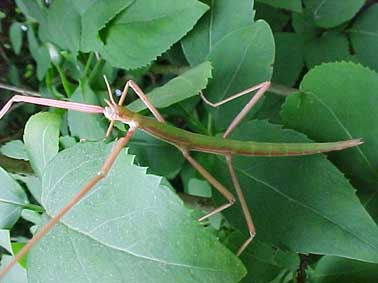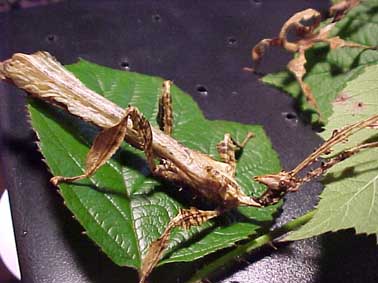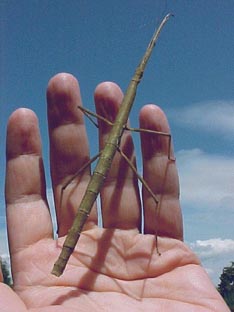|
HOME |
|

|
HOME |
|

There are almost 3,000 species of stick insects in the world; all are herbivores (plant-eaters).

The Indian Walkingstick (also called the laboratory stick insect, Carausius morosus) is a long, slow-moving, plant-eating insect from India.
CAMOUFLAGE
The stick insect is well-camouflaged in its environment, since it looks like a twig. The eggs are also camouflaged; the eggs have hard shells and look much like seeds.

ANATOMY
Like all insects, the stick insect has a three-part body (head, thorax and abdomen), six jointed legs, two pairs of wings, and two antennae. Its body is covered with a hard exoskeleton. They breathe through a series of holes called spiracles; they are located along the sides of the body.
METAMORPHOSIS
Indian Walkingsticks are often parthenogenetic; females can lay unfertilized eggs that hatch into females who can also lay unfertilized eggs. Walkingsticks undergo simple (or incomplete) metamorphosis; eggs hatch into nymphs, which look like little adults without wings and reproductive organs. Nymphs moult about 6 times as they grow to be adults. Indian Walkingsticks have a life span of about 18 months.
DIET AND PREDATORS
Walkingsticks eat bramble leaves, like blackberry and rose. Their predators include birds, rodents, reptiles, other insects, and spiders.
